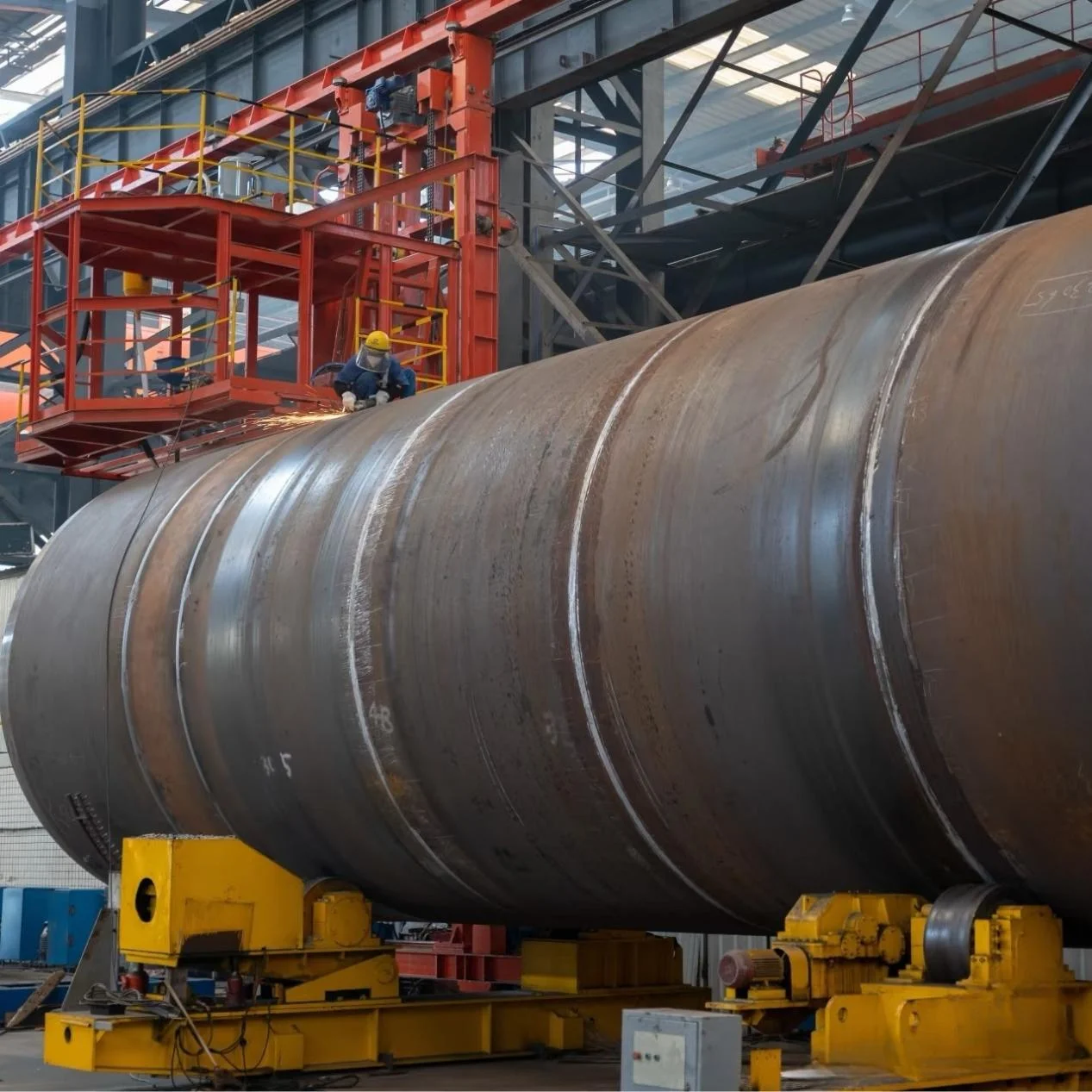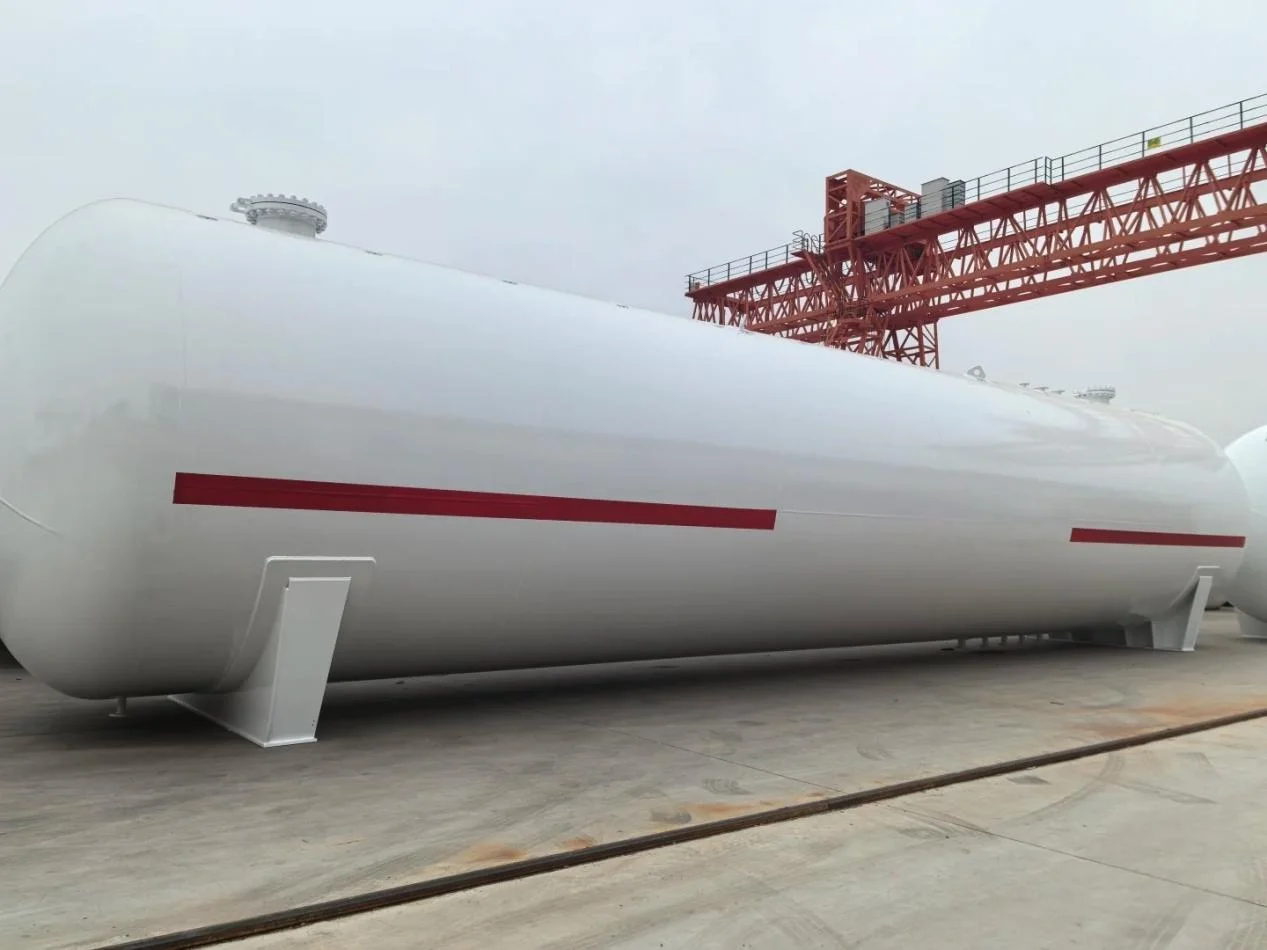Floating Liquefied Natural Gas (FLNG) platforms represent some of the most complex engineering feats in the energy sector, requiring precision welding for massive storage tanks, cryogenic pipelines, and modular structures. Welding rotators play a pivotal role in these projects, combining heavy duty performance with advanced automation to meet strict quality and safety standards. Below, we explore how welding rotators address critical challenges in FLNG construction and their real world impact on offshore fabrication.

Challenges in FLNG Construction & the Role of Welding Rotators
FLNG Platforms Demand Welding Solutions Capable of Handling:
1. Oversized Components: LNG storage tanks often exceed 10 meters in diameter, with wall thicknesses reaching 150mm for cryogenic grade steels like 9% nickel alloy.
2. Strict Tolerances: ASME B31.3 standards require circumferential weld misalignment to stay below 1.2mm, particularly for high strength X80/X100 steel pipelines.
3. Harsh Environments: Saltwater exposure, humidity, and limited deck space complicate equipment durability and deployment.

Welding Rotators Tackle These Challenges Through Innovative Engineering:
Adaptive Alignment Systems: Laser guided sensors automatically adjust roller positions to maintain ≤0.3mm/m roundness during rotation, even for 12 meter diameter tanks.
Corrosion Resistant Builds: Tungsten carbide coated rollers (HV≥1200) withstand marine conditions, quadrupling service life compared to standard models.
Compact Modular Designs: Collapsible frames enable installation in tight spaces (min. 8m×4m footprint), ideal for crowded deck areas.
Key Applications of Welding Rotators in FLNG Projects
1. Vertical Circumferential Welding for LNG Storage Tanks
Problem: Traditional methods struggle with 400 ton tank sections, where gravity induced ovality causes weld defects.
Solution:
Four synchronized heavy duty welding rotators (120 ton capacity each) support the tank, with LiDAR scanning dynamically adjusting roller positions.
Integrated preheating modules maintain 150–200°C for nickel alloy welds, preventing cold cracking.
Result: 33% faster weld cycles (48 vs. 72 hours) and ovality reduced to <0.5%.
2. Multi Position Welding for Subsea Pipelines
Problem: Fixed rotators lead to incomplete fusion in duplex stainless steel pipes (1.2m OD, 40mm wall thickness).
Solution:
Tiltable welding rotators (±30° adjustment) optimize weld pool control for 45° fixed position joints.
Acoustic emission sensors detect vibration anomalies, automatically synchronizing rotation with weld torch speed.
Result: Ultrasonic testing (UT) pass rates jump from 88% to 97%, cutting rework costs by 65%.
3. Assembly of Complex Deck Structures
Problem: Manual alignment of K/Y shaped tubular nodes causes delays and fit up errors.
Solution:
6 axis robotic welding rotators with machine vision achieve ±0.5mm alignment accuracy.
Polyurethane coated rollers prevent surface damage on high strength steels.
Result: Assembly time drops by 67%, with 80% less manual intervention.
Technological Advancements: Smart Welding Ecosystems
Leading manufacturers now integrate welding rotators into unified digital platforms:
Remote Collaboration: 5G enabled data sharing allows engineers in Europe to optimize welding parameters for Asian shipyards in real time.
Predictive Maintenance: Vibration analysis forecasts bearing failures 30 days in advance, minimizing downtime during critical phases.
Sustainability Tracking: Energy consumption and CO2 emissions per meter of weld are logged for ISO 14067 compliance.
Case Study: FLNG Pipeline Welding in Australia
A 2023 FLNG project deployed 32 synchronized welding rotators to complete 18km of pipeline welding:
Speed: Twin wire submerged arc welding (SAW) at 25cm/min, 60% faster than single wire methods.
Quality: Zero helium leak failures across 12,000 welds, verified by third party inspectors.
Cost Savings: 92% equipment utilization rate saved $3.1 million versus renting European alternatives.
Future Trends: Meeting Deepwater & Floating Demands
As FLNG projects expand into deeper waters, welding rotators are evolving with:
Subsea Ready Durability: IP68 rated housings for 3,000 meter depth operations.
Motion Compensation: Gyro stabilized systems counteract platform pitch/roll in rough seas (up to Sea State 6).
Hydrogen Power: Fuel cell driven rotators eliminate emissions for eco sensitive offshore zones.
Why Choose Modern Welding Rotators for FLNG?
Precision: Achieve ASME certified welds with ≤0.3mm/m roundness.
Versatility: Adjustable roller spans (2–4.5m) handle tanks, pipes, and irregular components.
Safety: Overload protection, emergency brakes, and anti tip locks meet ISO 12100 standards.
Conclusion
Welding rotators have evolved from basic rotation tools to intelligent systems driving efficiency in FLNG construction. By integrating adaptive technology, robust materials, and digital connectivity, these devices are reshaping offshore welding—ensuring faster timelines, lower costs, and compliance with global energy transition goals. For contractors and fabricators, investing in advanced welding rotators isn’t just about equipment upgrades; it’s about securing a competitive edge in the rapidly evolving maritime energy sector.
Learn More
Explore welding rotator specifications, case studies, and technical guides at leading industry portals or contact certified suppliers for tailored FLNG solutions.
